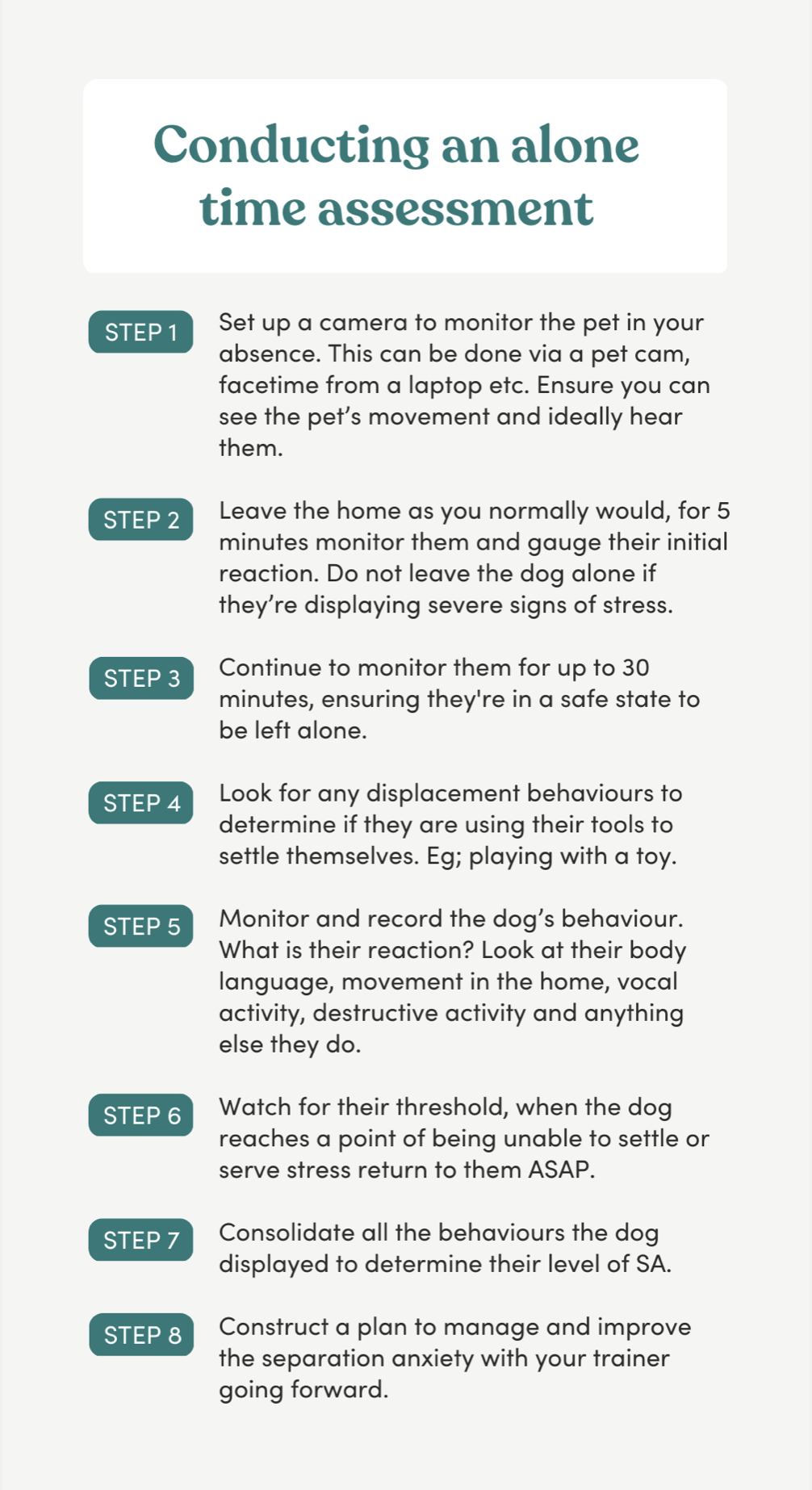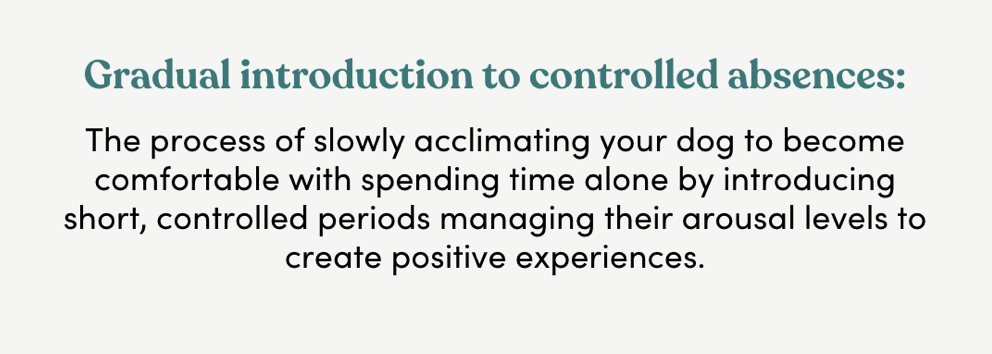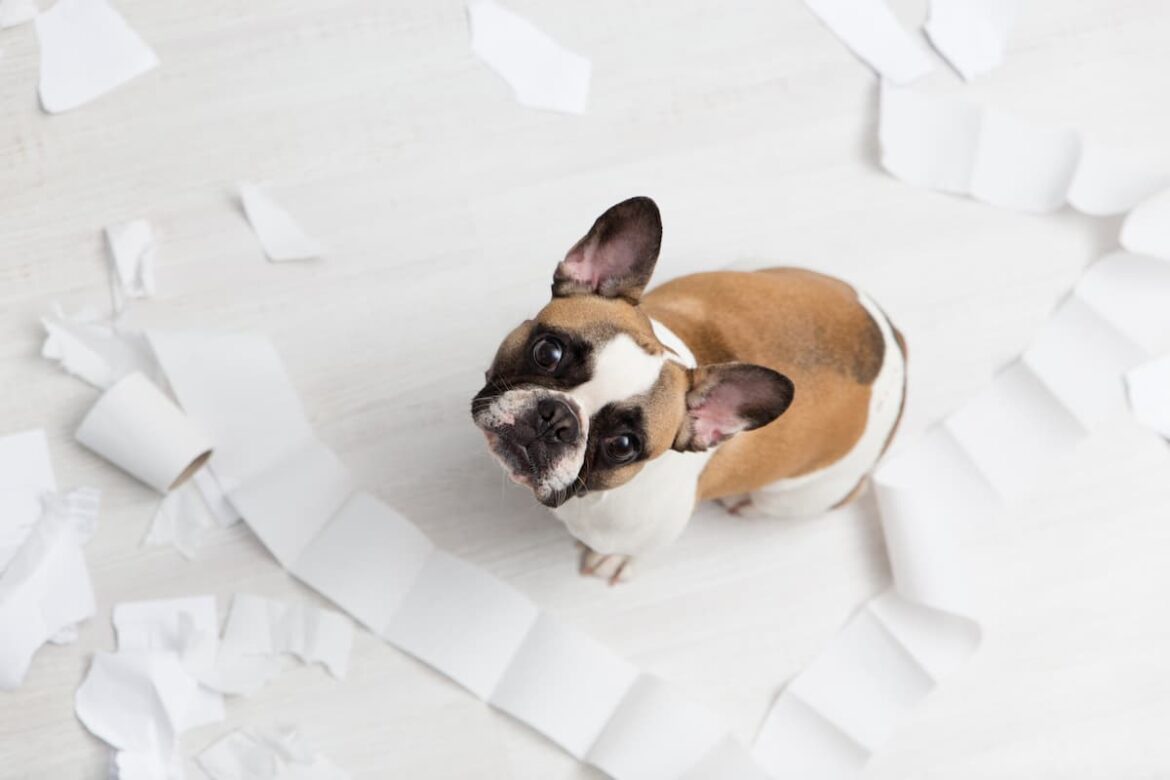Moira Hechenleitner Doctor of Veterinary Medicine & Certified Separation Anxiety Trainer defines separation anxiety as the phobia of being left alone without humans.
Having attended a seminar where Moira was a guest speaker, this article highlights some of the key learnings about separation anxiety in dogs and how to manage it.
Separation anxiety will continue regardless of how many times they’ve been exposed and are okay, it needs to be managed and will never fully go away. Showing distress when separated from people who are in sight is not necessarily separation anxiety, often it is just frustration.
Separation anxiety management is different from case to case, to understand the dog’s individual needs you need to conduct an alone time assessment in their most comfortable environment (their own home) which is best done with a trainer to ensure you can get an accurate assessment of their body language and behaviour.

Once you’ve conducted the alone time assessment you should have an understanding of how severe the separation anxiety is and what tools your dog already uses to help themselves that you can build on. The body language and behaviour that your dog displays will help you understand the length of time it takes them to reach the threshold, their coping strategies, what negative behaviour they display and much more. This insight is what will help a specialised plan to help manage their behaviour.
Separation anxiety can be triggered by a small change, which is why often separation anxiety will appear when a pet stays in a foreign environment like a pet sitter’s home. Confinement, environment, education, energy, health, adaptation skills, and frustration all play a role in how separation anxiety manifests which is why it’s key to understand the cause before starting management techniques.
Training and management are different, whilst some separation anxiety will require training some cases will be able to get by with only management. The severity of the separation anxiety will determine if training is required, if the dog has no capability of trying to calm itself down it is more likely to need training.
The biggest tool for separation anxiety in dogs? Management.
Management is your biggest tool to combat separation anxiety. Implementing a training and or management plan is the responsibility of the Owner however, because separation anxiety can appear circumstantially – if the separation anxiety presents only in a particular setting, for example – it will need to be a joint effort to combat it.
 So, how do we start managing separation anxiety? A gradual introduction of controlled absences.
So, how do we start managing separation anxiety? A gradual introduction of controlled absences.
Gradual introduction of controlled absences:
Controlled absences will look different for each dog based on their arousal levels, coping mechanisms etc so reflect on the alone time assessment to create a starting point. For some dogs the closing of the door could be the trigger so combatting this might be a huge help, for others it might be a fear of noise so leaving on music or doggie tv can be helpful, this is why each plan needs to be specialised and there isn’t a single approach.
Attachment to people plays a role in separation anxiety, hyper-attachment to their owner, fear of new people, and abandonment issues, can all trigger separation anxiety. Providing dogs with plenty of safe opportunities to bond with different people is a great way to avoid separation anxiety manifesting when they’re put into different environments with different people.
Separation anxiety is one of the most common behavioural hurdles dogs face in a post-covid world so it’s important to know the what, why, how and who in order to help reduce the occurrence and severity.
For more information on this topic, read this previously published article on how to calm an anxious dog >

